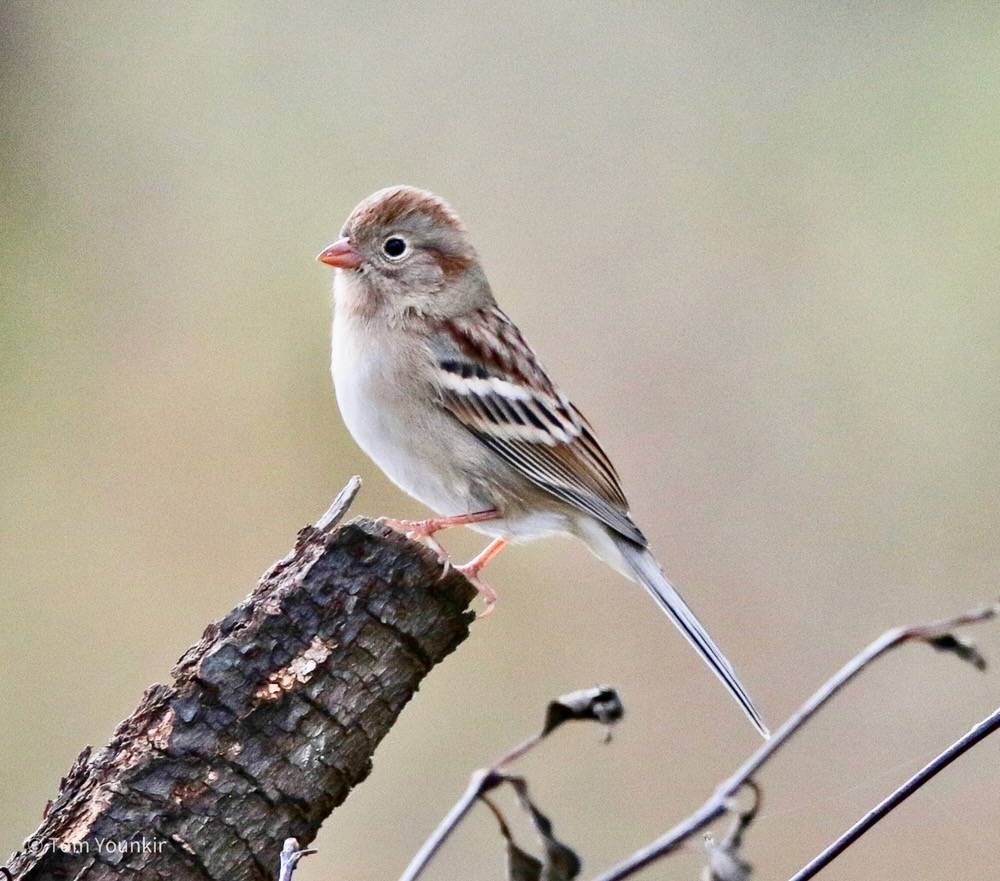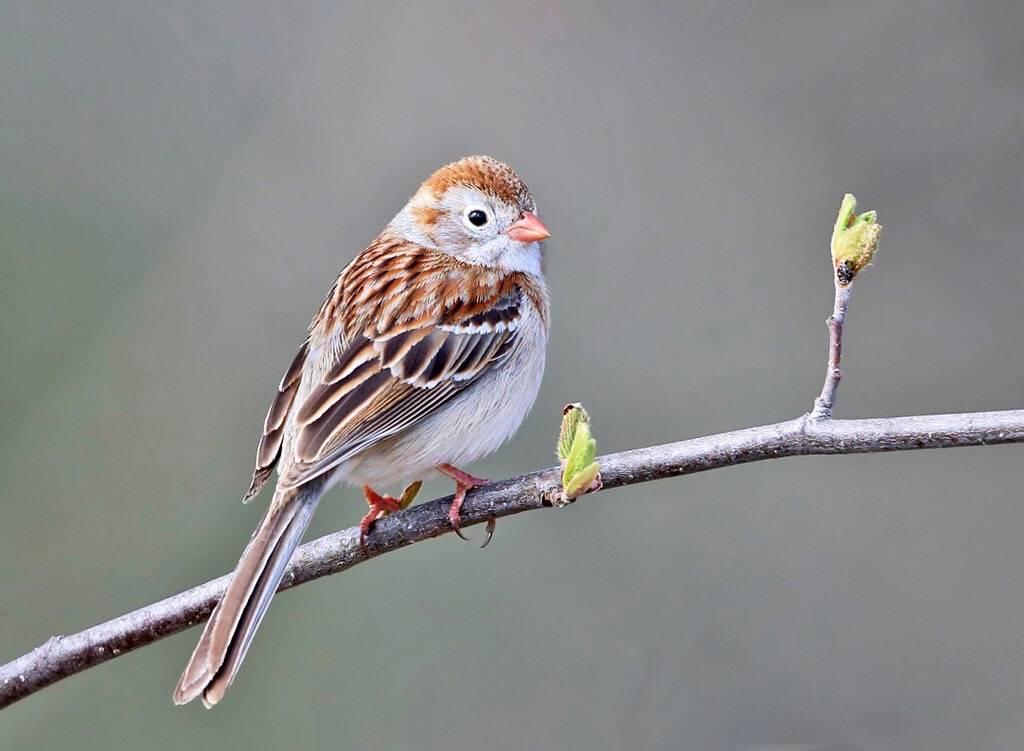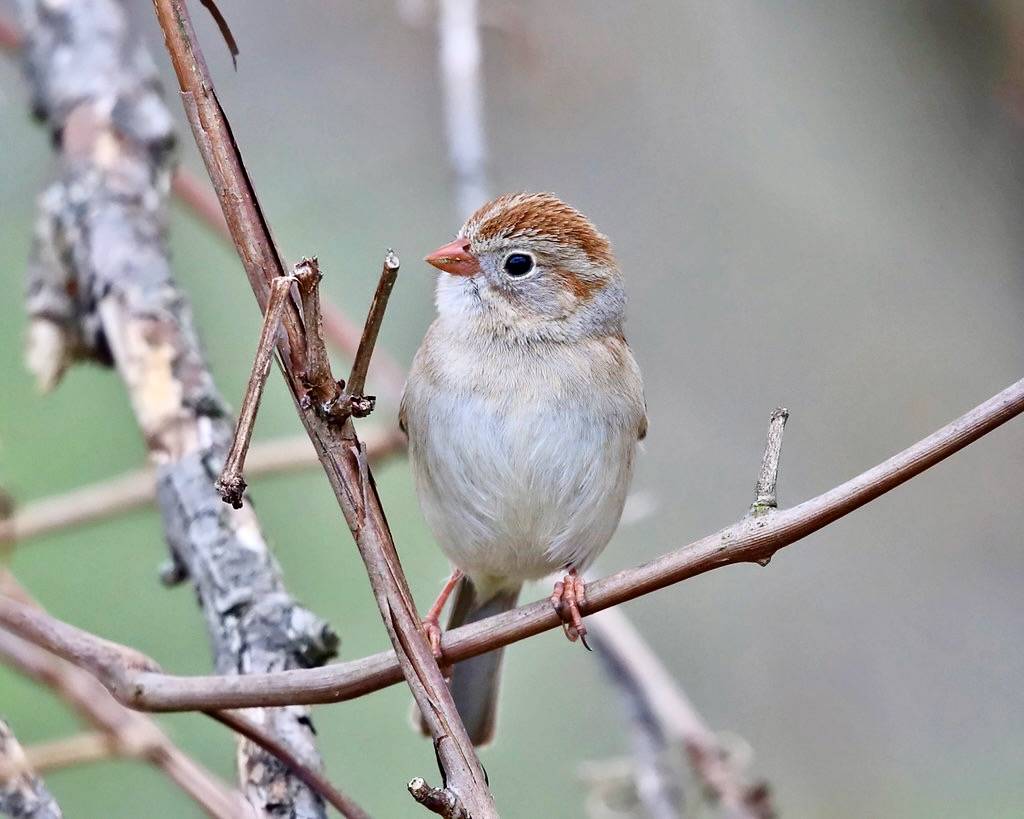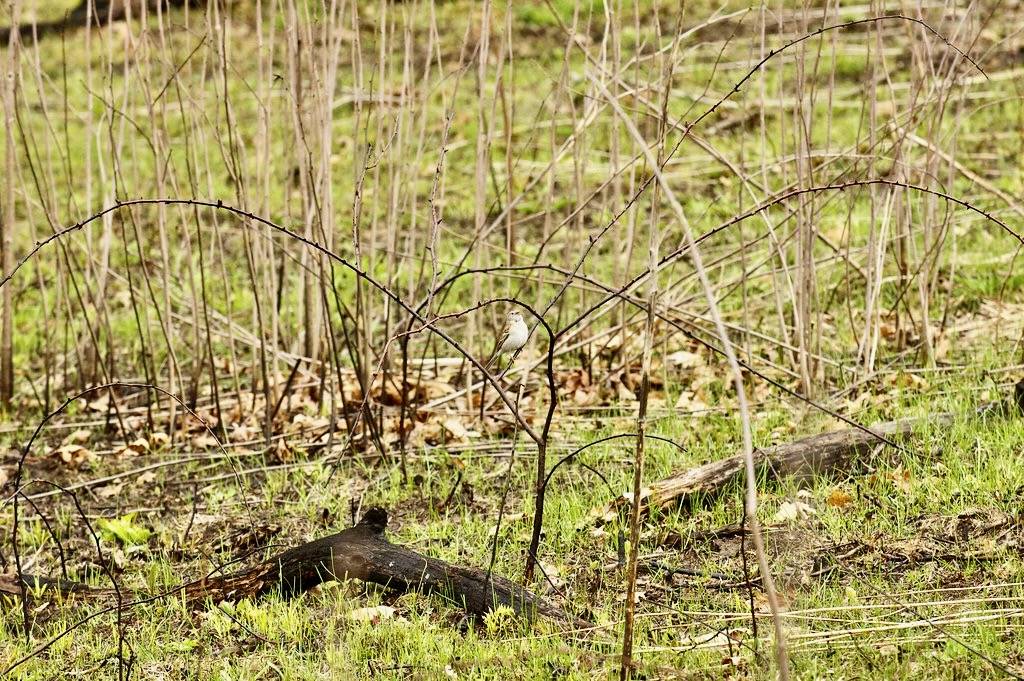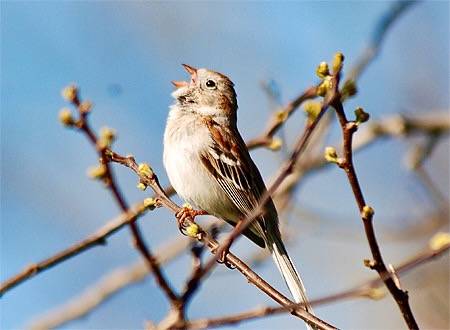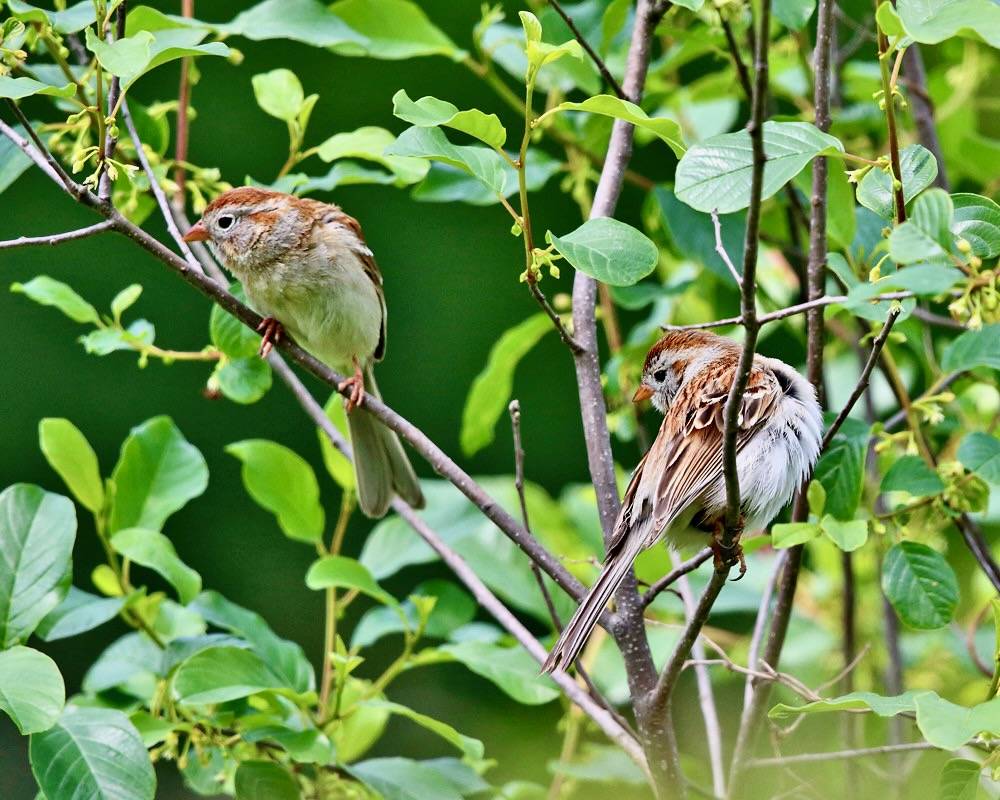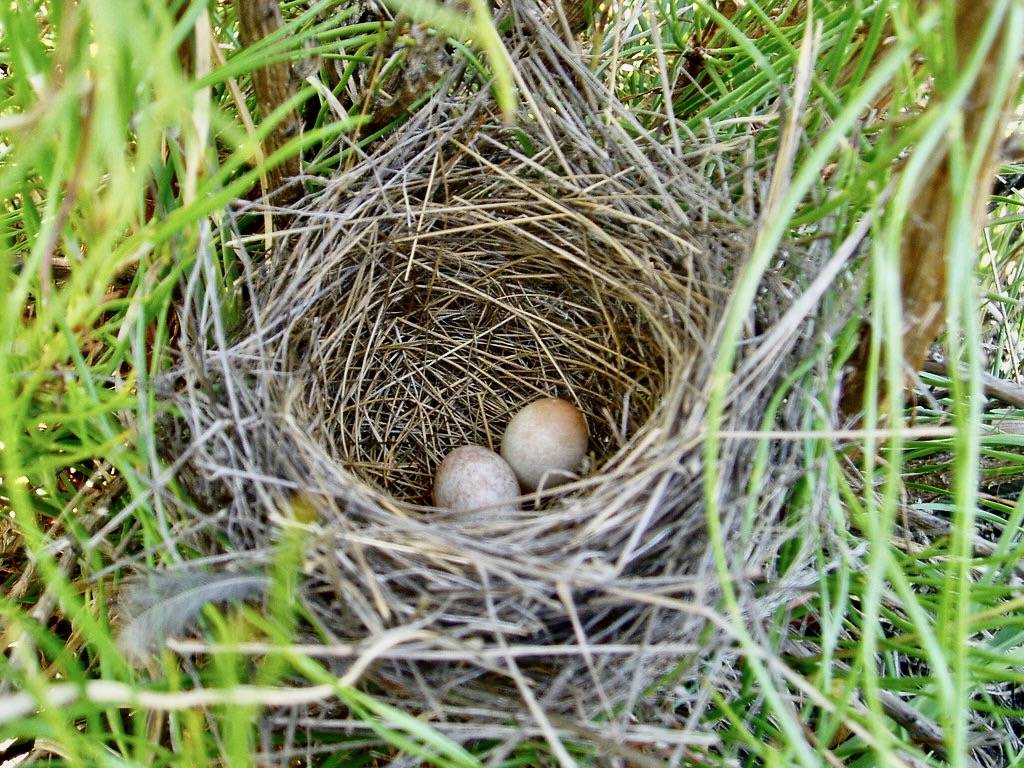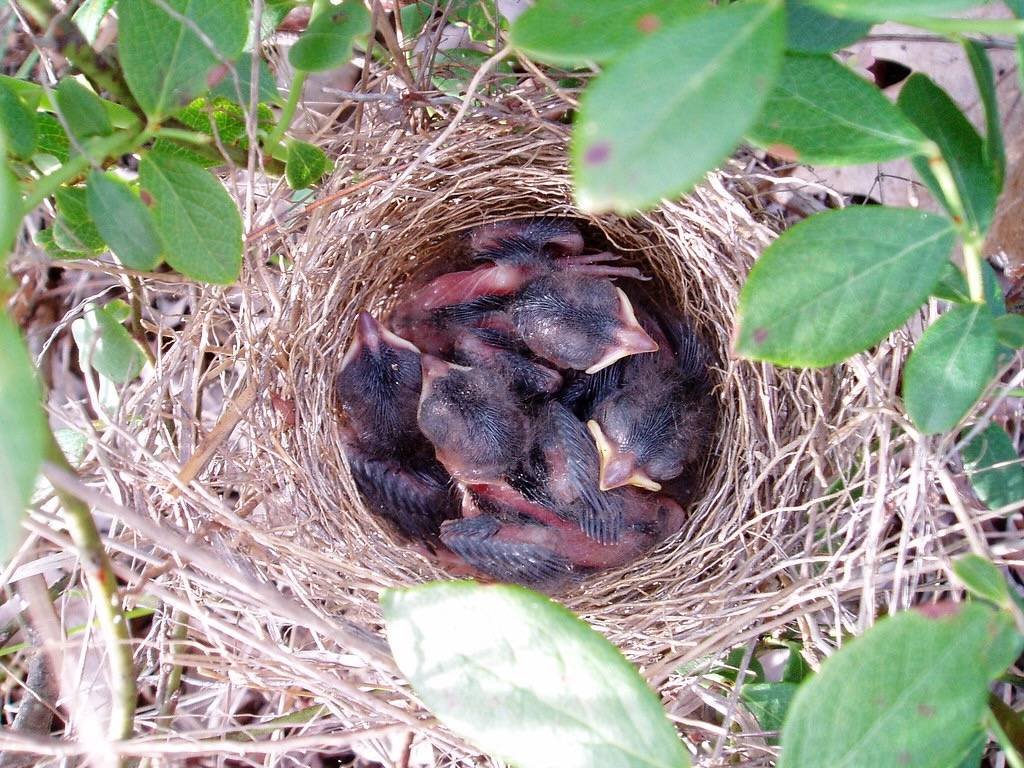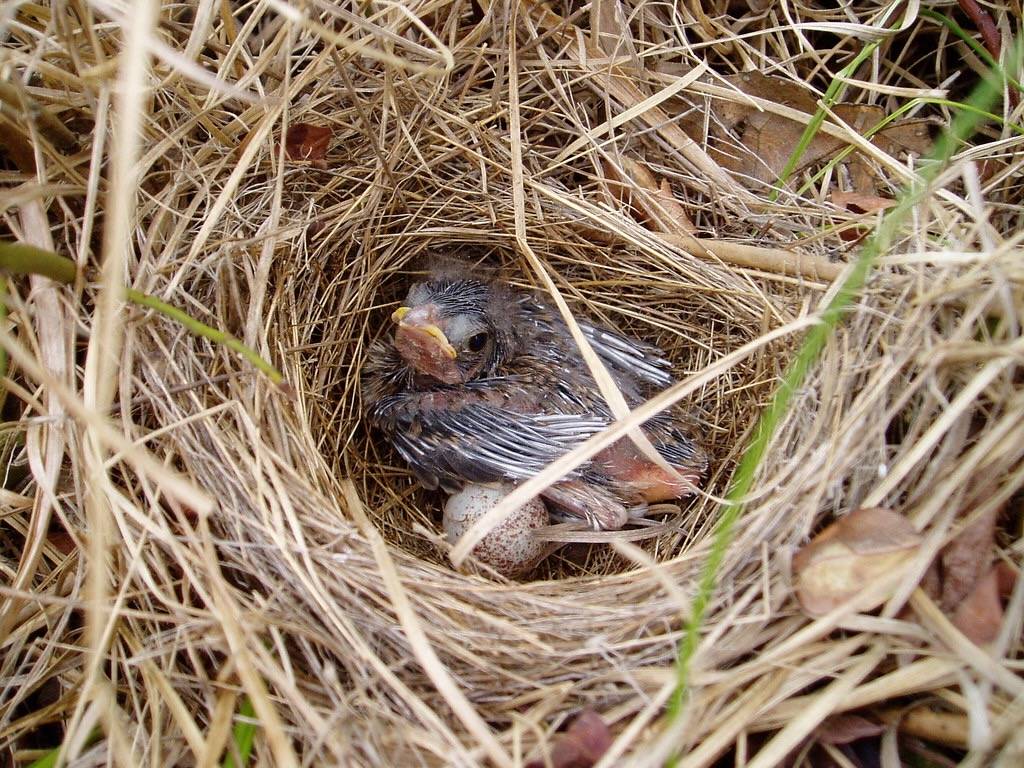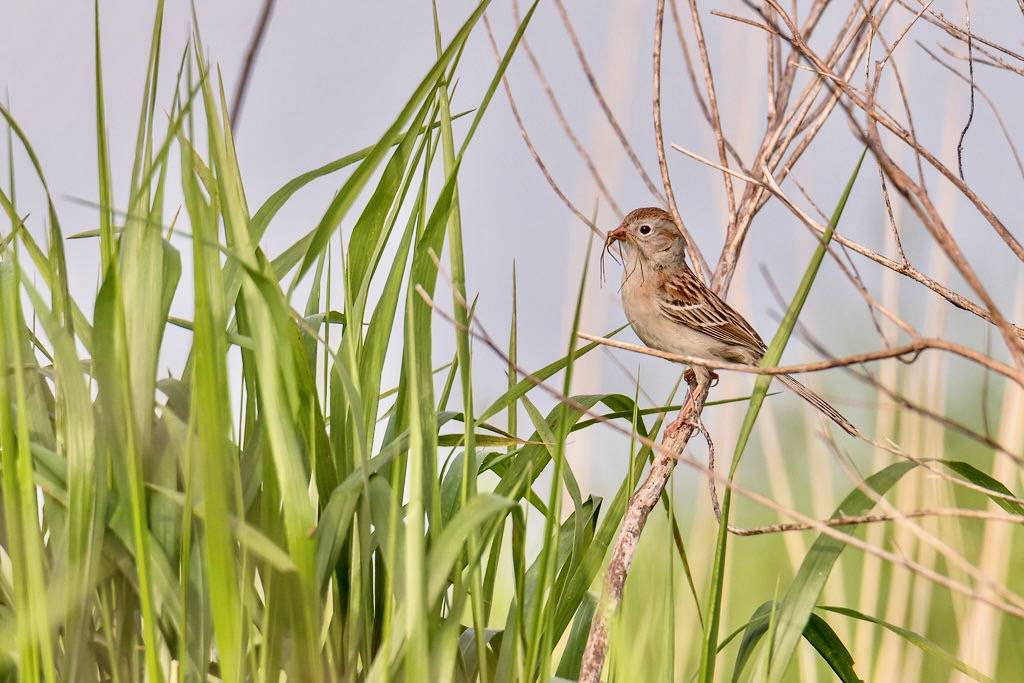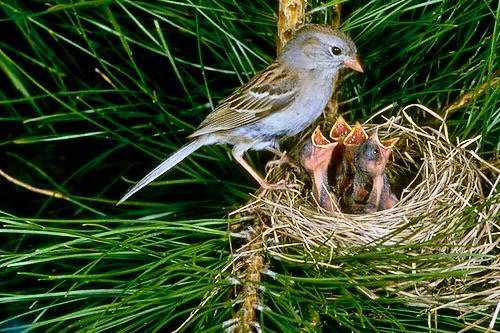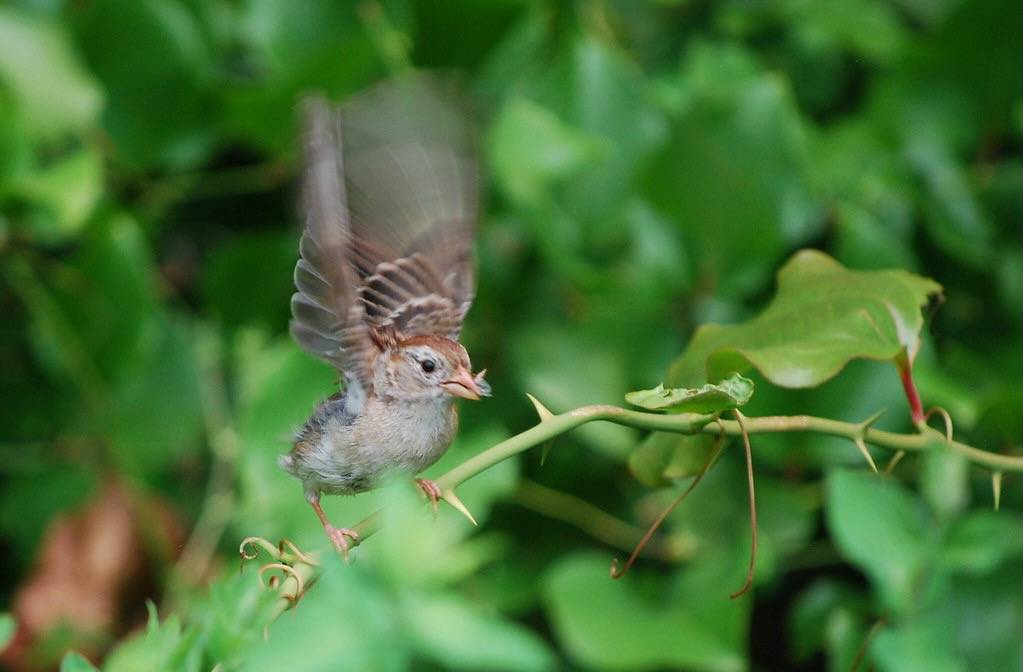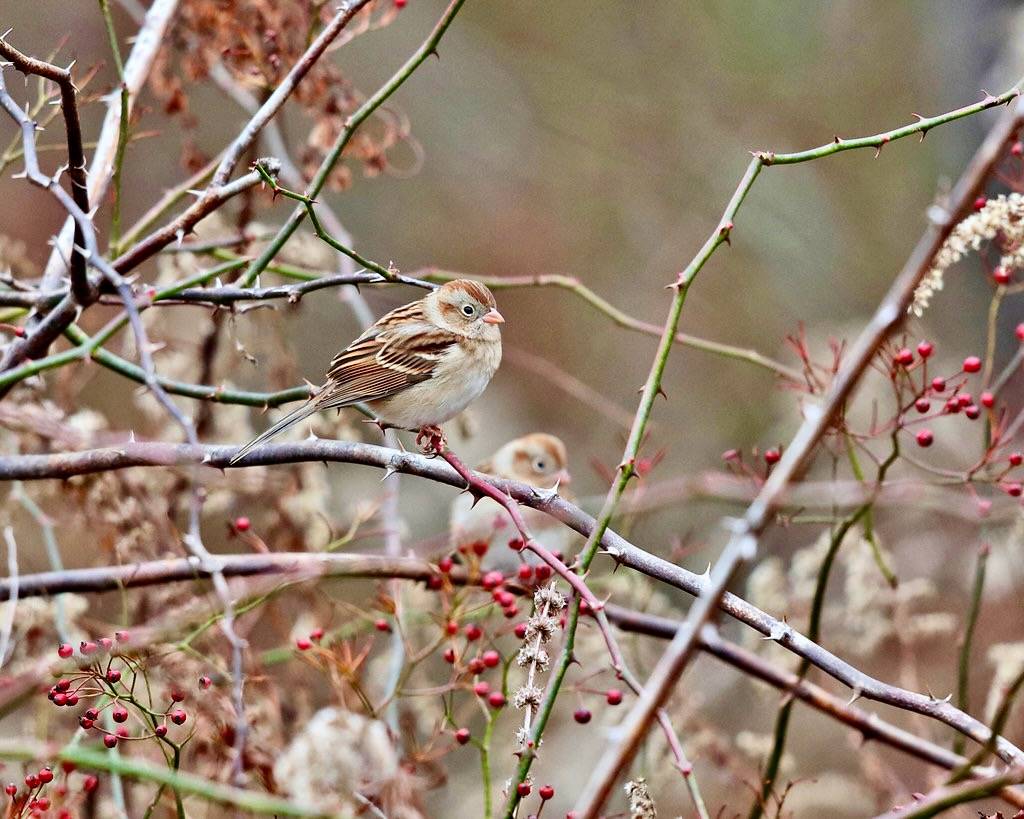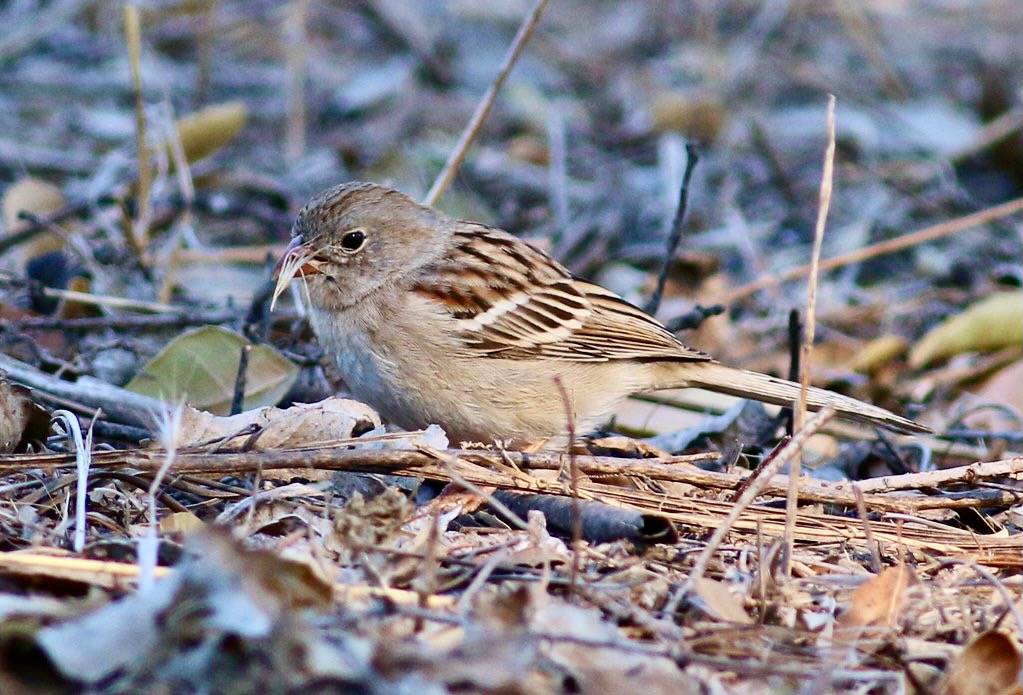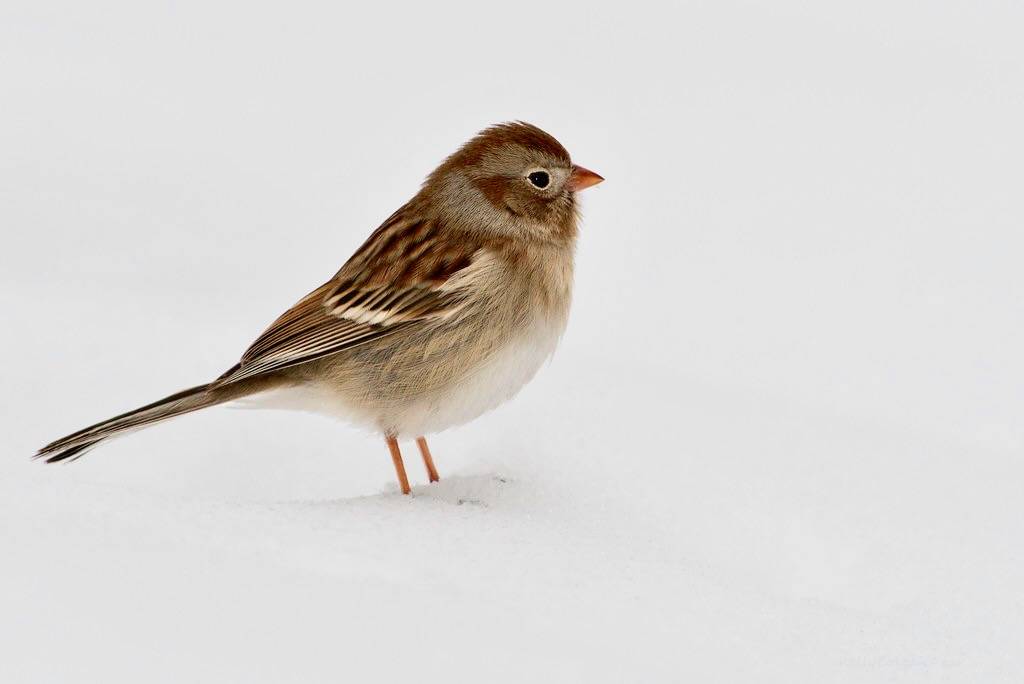Field Sparrow
According to available birding data from 2002 to 2020, the Field Sparrow has only been seen twice at Salter Grove, in late January 2020 and in early May 2022. This is not surprising because the park lacks the expansive bushy fields that this winter visitor prefers.
Look for it in the bushy vegetation that marks the interface of lawn and woodland near the parking lot or on Audubon field as it forages for seeds and insects. It has the habit of landing at the top of a tall slender grass stem and then using its body weight to lower the seed head down to the ground where it can pluck at the seeds in comfort.
The Field Sparrow is noticeably smaller than the Song Sparrow which is the most common native sparrow in the park. Unlike the Song Sparrow, it has unstreaked underparts and a notched tail.
Its well defined white eyering, pink bill, and light rufous crown and eyeline help to distinguish it from other small sparrows with unstreaked breasts that migrate through Salter Grove. The Chipping Sparrow has a dull bill, a bright rufous crown and a black eyeline. Another possible misidentification would be the American Tree Sparrow which has a bicolored bill and a rusty eyeline.
The Field Sparrow ranges widely east of the Rockies from southern Canada to Texas. Its population probably increased with deforestation during colonial times but has subsequently declined in recent decades as fallow farmland is converted to suburban housing with regularly mown lawns.
Its first nest is always built on the ground in a clump of grass near or beneath a bush. Predation by snakes or other predators, or brood parasitism by the Brown-headed Cowbird results in nest abandonment but a second one is immediately built.
Successfully fledging one brood does not signal the end of the breeding season for the small Field Sparrow. Many pairs will often breed a second time in a nest placed higher up in leafy shrubs. A single pair may raise as many as five broods of young in a good year. One persistent female in Illinois made 10 nesting attempts!

